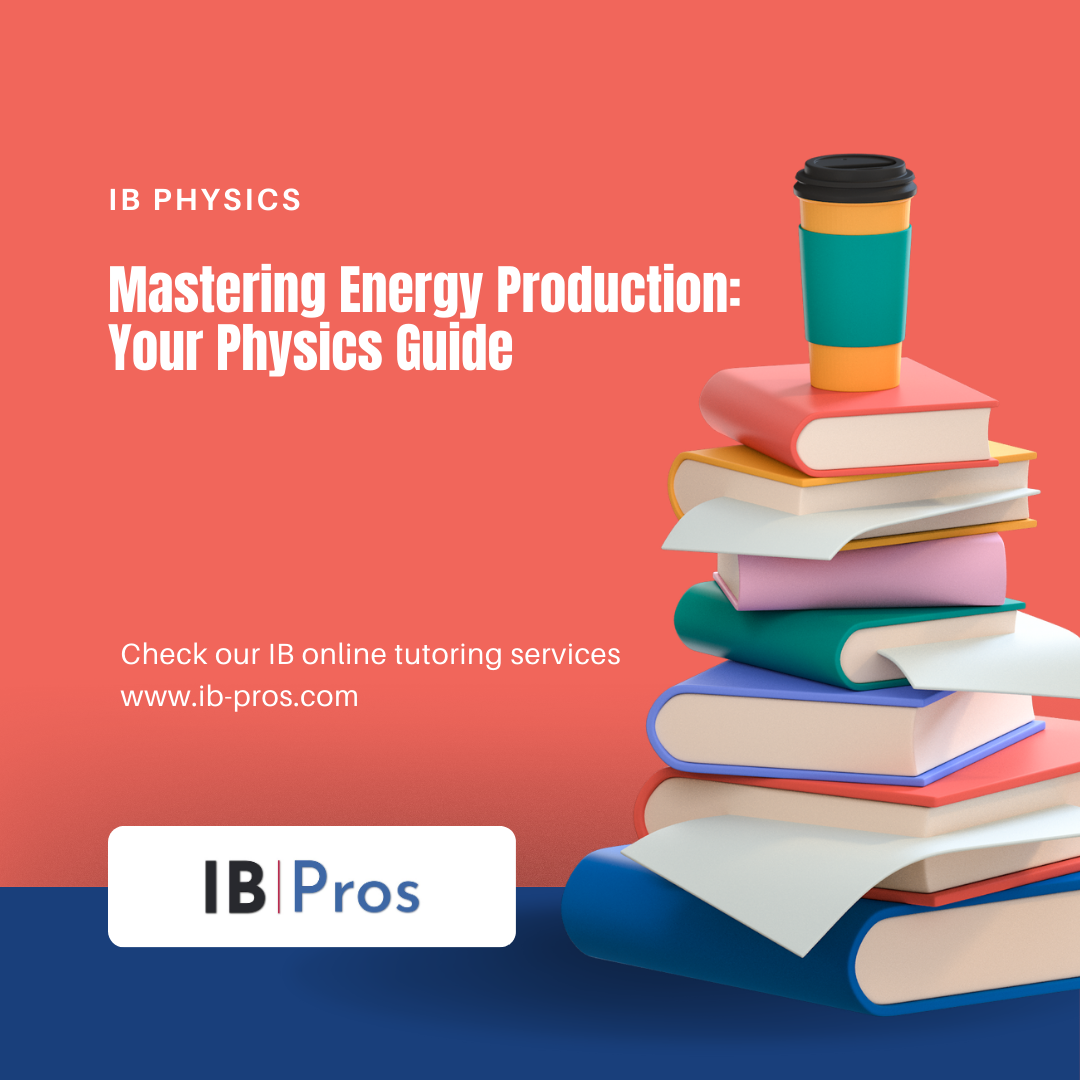
In the contemporary epoch, the quest for mastering energy production remains at the forefront of scientific inquiry and technological advancement. This guide embarks on a comprehensive exploration of the fundamental principles that govern the transformation and utilization of energy in various forms. Through an examination of the prevailing laws of physics, one can discern the intricate mechanisms that underlie both conventional and cutting-edge energy production methodologies. Although the landscape of energy technology is vast, this discourse aims to illuminate the intricate pathways by which humanity harnesses the very sinews of power that propel our civilization forward. As we scrutinize the intricate tapestry of energy production, one may begin to ponder the trajectory of our future energy systems and the role they will play in sculpting a sustainable tomorrow.
Key Takeaways
- Renewable energy sources, such as solar, wind, and hydroelectric power, offer distinct inputs, conversion processes, and outputs compared to non-renewable energy sources.
- The laws governing energy conversion, including the First and Second Laws of Thermodynamics and Quantum Energy States, play a crucial role in understanding energy production.
- Traditional energy production methods involve converting fossil fuels, gravitational potential, or nuclear energy into thermal and mechanical energy.
- The future of energy innovation lies in exploiting quantum phenomena, enhancing photovoltaic technologies, finding novel solutions for sustainable power generation, and exploring advancements in energy storage and material engineering.
Understanding the Energy Landscape
In the realm of energy production, the ‘landscape’ is a complex and dynamic matrix of resources, technologies, and policies that shape the availability and sustainability of power generation. Central to this landscape is the interplay between renewable and non-renewable energy sources, each characterized by distinct inputs, conversion processes, and outputs. The technical parameters of energy systems—such as capacity factor, energy density, and intermittency—demand rigorous analysis to optimize their performance within the given environmental and economic constraints.
Renewables, including solar, wind, and hydroelectric power, are governed by natural cycles and require technologies capable of harnessing these variable inputs. Conversely, non-renewables like coal, natural gas, and nuclear power offer more stable but finite energy supplies, with differing carbon footprints and waste management challenges. Policy frameworks play a pivotal role in mediating the energy mix, influencing research funding, infrastructure development, and regulatory measures that aim to balance energy security with environmental stewardship.
The physics of energy conversion—be it photovoltaic effect, aerodynamic turbine design, or nuclear fission—underpins the functional efficacy of these technologies. As such, a robust understanding of the energy landscape necessitates a multidisciplinary approach, integrating physical principles with technological innovation and policy analysis to drive the evolution of energy production towards a more sustainable future.
Read More About: Mastering Electromagnetic Interactions: Your Ultimate Physics Guide
Laws Governing Energy Conversion
The foundational principles of thermodynamics and quantum mechanics provide the framework for understanding energy conversion processes in all forms of power generation. Thermodynamics, in particular, lays out the universal laws that govern the flow and transformation of energy, making it indispensable for engineers and scientists working to optimize energy systems. Quantum mechanics, on the other hand, becomes crucial when dealing with phenomena on atomic and subatomic scales, such as electron transitions in photovoltaic cells or the behavior of superconducting materials.
To dissect the complexity of energy conversion, consider the following key principles:
- First Law of Thermodynamics: This law asserts the conservation of energy, stating that energy can neither be created nor destroyed, only transformed from one form to another.
- Second Law of Thermodynamics: It introduces the concept of entropy, positing that energy conversions are never 100% efficient, with some energy inevitably lost as waste heat.
- Quantum Energy States: Quantum mechanics reveals that energy transfer at the microscopic level occurs in discrete quanta, influencing the design and function of semiconductors and lasers.
These laws not only dictate the theoretical limits of energy systems but also inform practical design considerations for improving efficiency and harnessing renewable energy sources. Through a rigorous and analytical approach, understanding these principles is essential for advancing energy production technologies.
Traditional Energy Production Methods
Understanding the foundational laws of energy conversion sets the stage for a detailed examination of traditional energy production methods, such as fossil fuel combustion, hydroelectric power, and nuclear energy. These methods have historically dominated the energy sector due to their reliability and high energy output. The technical process of converting raw materials into usable energy involves a series of precise physical and chemical transformations, governed by the principles of thermodynamics.
Fossil fuel combustion, for example, harnesses chemical energy stored within natural resources like coal, oil, and gas, releasing it as heat through combustion. This heat is then typically used to produce steam, driving turbines connected to electrical generators. Hydroelectric power, on the other hand, converts potential energy from elevated water sources into kinetic energy as the water flows through turbines. Nuclear energy production arises from the fission of heavy atomic nuclei, releasing vast amounts of energy in the form of heat, which is again used to generate steam for turbine operation.
The following table delineates key aspects of these traditional energy production methods:
MethodPrimary Energy ConversionFossil FuelChemical to Thermal to MechanicalHydroelectric PowerGravitational Potential to KineticNuclear EnergyNuclear to Thermal to Mechanical
These methodologies, while effective, also pose environmental and safety challenges that necessitate careful management and, increasingly, the exploration of alternative energy sources.
You Also Might Like: Master Physics Energy Production: Beyond Regular Study Resources
Renewable Energy Technologies
Renewable energy technologies capitalize on natural processes to generate power, encompassing solar, wind, geothermal, and other sustainable sources that convert environmental energy into electricity without depleting resources. These technologies are designed to extract energy with minimal environmental impact while providing a virtually inexhaustible supply of electricity.
The technical aspects of these renewable sources involve complex physical principles:
- Solar Power: Utilizes photovoltaic cells to convert sunlight directly into electricity. The efficiency of these cells is continually improving, with advances in materials science contributing to higher energy conversion rates and lower costs.
- Wind Energy: Harnesses the kinetic energy of wind through turbines. The aerodynamics of the turbine blades, coupled with sophisticated control systems, maximize energy capture from variable wind speeds.
- Geothermal Energy: Taps into the Earth’s internal heat. Enhanced geothermal systems (EGS) use advanced drilling techniques to access deeper reserves, increasing the potential for geothermal power generation.
Each of these technologies requires a deep understanding of physical processes to optimize performance and integrate seamlessly into the existing energy infrastructure. Continuous innovation in materials, engineering, and system design is critical to increasing the efficiency and reducing the cost of renewable energy technologies, thereby accelerating their adoption and the transition towards a sustainable energy future.
The Future of Energy Innovation
Building upon the advanced principles that underpin current renewable energy technologies, future innovation holds the promise of even greater efficiencies and novel solutions in the realm of sustainable power generation. As we delve deeper into the atomic and molecular mechanisms of energy transfer and conversion, emergent technologies are poised to exploit quantum phenomena and materials science advancements to revolutionize our energy infrastructure.
Analytically, the trajectory of energy innovation is set to encompass enhanced photovoltaic cell architectures that push the Shockley-Queisser limit, harnessing more of the solar spectrum for electricity conversion. In tandem, wind energy technology is advancing towards optimized blade designs utilizing computational fluid dynamics to maximize energy capture from fluctuating wind patterns. Furthermore, the maturation of energy storage, particularly through solid-state batteries and hydrogen fuel cells, is critical for mitigating intermittency issues inherent in renewable sources.
Technically, precision in material engineering is facilitating the rise of perovskite solar cells and the integration of nanotechnology in energy systems. Innovations such as artificial photosynthesis for chemical energy storage and smart grids equipped with real-time analytics for efficient energy distribution are indicative of a paradigm shift.
The rigorous pursuit of these advancements requires an interdisciplinary approach, where physics-based insights drive the innovation of sustainable and reliable energy solutions for the future.
Read Also: Mastering Electromagnetic Fields in IB Physics: A Guide
Frequently Asked Questions
How Do Quantum Mechanics Principles Influence Microscopic Energy Production and Transfer Processes?
Quantum mechanics principles are fundamental to understanding energy production and transfer on a microscopic scale. They dictate the behavior of particles at atomic and subatomic levels, influencing phenomena such as electron energy levels, quantum tunneling, and wave-particle duality. These factors are critical in processes like photosynthesis, semiconductor operation, and nuclear reactions, where energy is absorbed, emitted, and transformed according to the probabilistic nature of quantum systems.
Can Zero-Point Energy Be Harnessed for Practical Energy Production, and What Progress Has Been Made in This Field?
Harnessing zero-point energy for practical energy production remains speculative, as current scientific understanding labels it as non-extractable within the laws of quantum mechanics. Despite theoretical interest, empirical progress in this field is negligible, and no verified methods to tap into this quantum mechanical phenomenon for usable energy have been established. Research is ongoing, but the concept largely resides within the realm of theoretical physics with no practical application to date.
How Do Energy Production Methods Impact Human Health and Ecosystem Biodiversity on a Microscale?
Energy production methods significantly influence human health and ecosystem biodiversity at a microscale. Traditional fossil fuel-based technologies release pollutants that contribute to respiratory diseases and disrupt delicate ecological balances. Conversely, renewable energy sources, such as solar and wind, exhibit minimal emissions, thereby reducing adverse health effects and ecological disturbances. Microscale impacts also include thermal pollution and habitat alteration, emphasizing the importance of sustainable practices in energy infrastructure development.
What Are the Ethical Considerations Surrounding the Displacement of Communities for Large-Scale Energy Production Projects?
The ethical considerations in displacing communities for energy projects encompass respect for local rights, informed consent, and equitable compensation. Analyzing such impacts requires a nuanced understanding of socio-economic disruptions and cultural losses. Ethical frameworks must prioritize transparent engagement with affected populations, ensuring participation in decision-making and fair benefit-sharing. Careful scrutiny of long-term consequences on displaced communities, as well as mitigation strategies, is also a critical component of responsible energy development.
How Might Artificial Intelligence and Machine Learning Technologies Revolutionize the Management and Distribution of Energy Production in the Next Decade?
Artificial intelligence (AI) and machine learning (ML) are poised to significantly enhance the efficiency of energy management and distribution systems. Over the next decade, these technologies can predict demand patterns, optimize grid operations, and facilitate real-time energy trading. The integration of AI and ML enables predictive maintenance, reduces outages, and supports the integration of renewable energy sources, ultimately leading to a more reliable and sustainable energy infrastructure.
Conclusion
In conclusion, the mastery of energy production is pivotal for societal advancement. As the energy landscape evolves, adherence to fundamental physical laws remains non-negotiable. While traditional methods have laid a robust foundation, renewable technologies are essential for sustainable progress. Future innovations promise enhanced efficiency and reduced environmental impact, indicating a trend towards a more resilient and responsible energy paradigm that balances human needs with ecological stewardship. The pursuit of this balance is the cornerstone of contemporary energy strategy.
